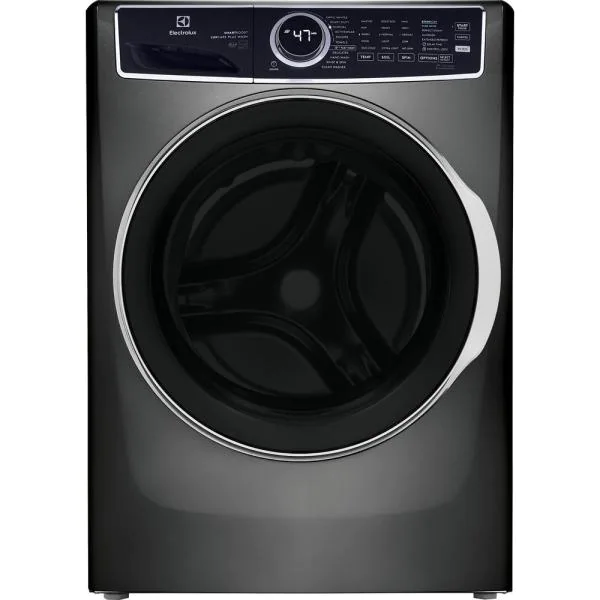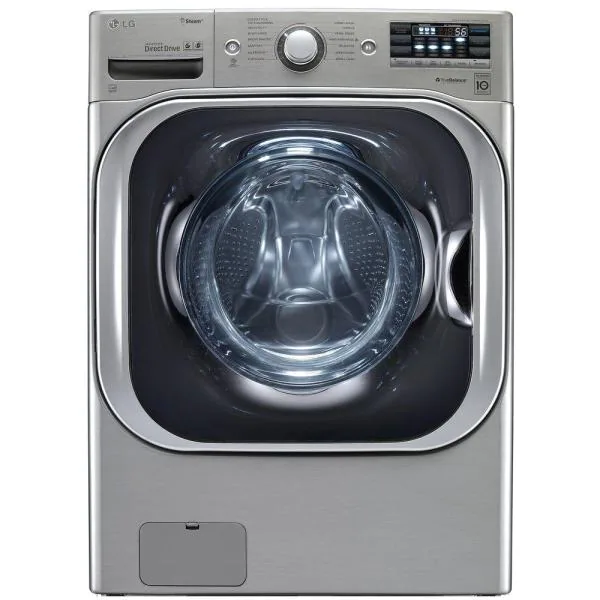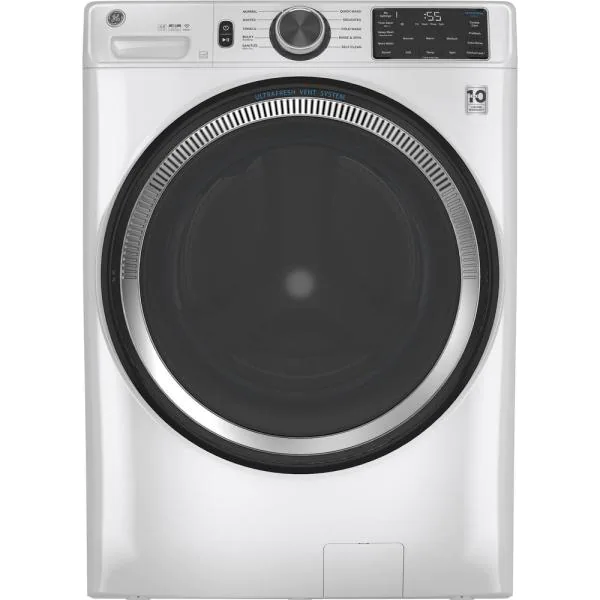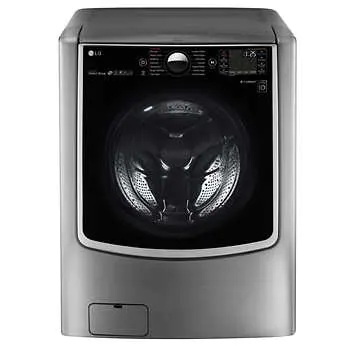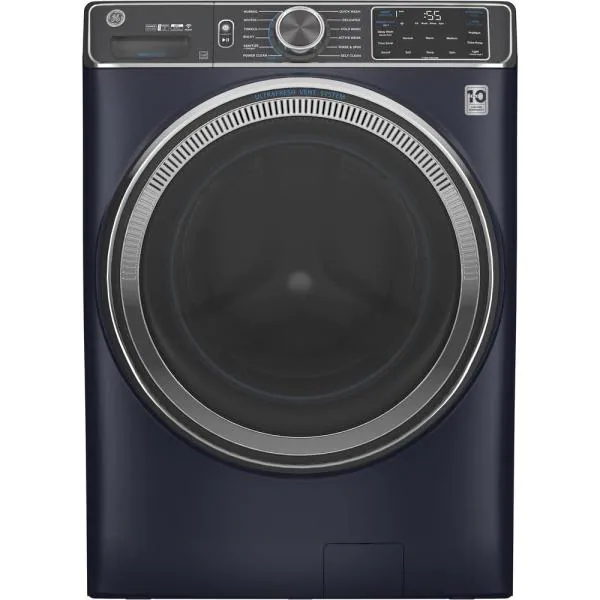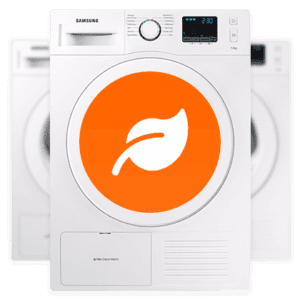What makes a washing machine energy efficient?
Washers use a lot of electricity mainly to heat water. Turning the drum doesn’t take half as much energy. When we talk about an “energy efficient washing machine”, most of the energy saved is in heating the water.
You might think that you would also save a lot of electricity by having a shorter wash cycle, and that is true to some extent. But often, short programs don’t get your laundry clean. If you want to wash using less water and less energy, you should choose a long program at 40 to 60 degrees.
The energy efficiency of a washing machine is measured by its energy class – formerly known as the energy label. New washing machines range from energy label A to energy label F. A washing machine with energy label A uses the least energy. Most washing machines on the market today are rated A or C. An energy-efficient washing machine is one that is rated A, B or C.
Energy-efficient washing machines are usually a bit more expensive to buy, but can actually save you money in use. This is because they keep your energy bills considerably lower. The specifications of a washing machine can often tell you how much energy (and money) you will save over its lifetime.
Best energy-efficient washing machines of 2024
If you’re looking for a new washing machine that conserves water and energy, here’s what you need. Below is a list of the best energy-efficient washing machines on the market today. In making this selection we have compared many washing machines with each other. Of course based on energy consumption per wash, but we also looked at the fill weight, spin speed, noise level, different wash programs, and any additional features for convenience. Is the best energy-efficient washing machine for your household among them?
1
Best energy efficient washing machine
Your search for the perfect washing machine is finished with the Electrolux ELFW7637AT 4.5 cu. ft. front load washer. Measuring 32 inches deep, 38 inches high and 27 inches wide, it’s the perfect size for your home. At just 217 lbs., it’s lighter than many washers its size. Pair it with your favorite
Electrolux dryer, because it’s stackable. With a reversible round door, you have more freedom to place it in more locations. With interior lighting, finding articles of clothing is easier than ever. The low maintenance stainless steel drum does not rust and will keep your laundry safe from snags.
Now let’s talk about how this washer can save you money with an Energy Efficiency Rating of Tier II, consuming just 85 kWh/year! With an impressive maximum spin speed of 1300 revolutions per minute (RPM), your clothes come out drier, cutting down the time your laundry needs to spend on the clothing line. If you're in a hurry, the 15-minute fast wash option is handy. The 11 wash cycle choices include Active Wear, Allergen, Colors, Delicates, Extra Rinse, Handwashable, Heavy Duty, Normal, Rinse & Spin, Sanitize, Soak, Speed Wash, Towels and Sheets, Tub Clean and Whites. Choose the best one according to your washing needs.
This washer features many of Electrolux’s wonderful technology. SmartBoost premixes the detergent and water before each wash cycle allowing it to have the maximum cleaning power. The LuxCare Plus Wash System ensures tough but gentle cleaning of your laundry. The Stain Soak option eliminates the need for a pre-treat. Remove 95% of allergens from your clothing, towels and bedding with our NSF-certified Allergen option. Perfect Steam gently lifts dirt from the bottom up and Solid Soil works on tougher, caked on dirt. You have the option to use any detergent type you like with the world’s first Adaptative Dispenser: powder, liquid and even pods.
Discover more when you take the Electrolux ELFW7637AT home. Power cord is included.
LG brings you an innovative new washing machine with the LG WM8100HVA front load washer. The impressive 5.2 cu. ft. capacity will allow to you clean over three baskets of clothing in a single load or a king-sized duvet. With measurements of 32.88 inches deep, 40.75 inches high and 29 inches wide at 225 lbs., this machine is compatible with the LG SideKick which will allow you to wash smaller loads simultaneously. Stack it on top of your
dryer to comfortably fit into your laundry closet or smaller spaces. The stainless-steel left swing door lets you look inside the washer complemented with the interior lighting, so you can find articles of clothing faster.
The LG WM8100HVA consumes as little as 125 kWh of energy per year, with an Energy Efficiency Rating of Tier II. The maximum spin speed is up to 1300 RPM, so you have the option to go for lower spin speeds on your delicates, and higher spin speeds on bulky items like duvets. 14 wash cycles are available for your choosing including the AAFA- Certified Allergiene, NSF-certified sanitary and hand wash/wool.
The ColdWash technology, powered by the LG Direct Drive Motor and 6Motion, uses cold water and enhanced washing motions to deliver cold-water saving with a warm-water performance. Give big loads the same great clean with TurboWash, which can cut laundry time by up to 30 minutes. Experience the power of steam which gently but powerfully penetrates fabrics to eliminate dirt, odors and wrinkles. The TrueBalance anti-vibration system is designed to minimize washer vibration for smooth, quiet performance in any room of the house. Save yourself from a call to the customer service with the SmartDiagnosis app which you can download on your smartphone. Discover all these features along with standard features like add garment (pause), control lock, delay start, end-of-cycle signal, water heater and much more when you choose this washing machine.
The LG WM8100HVA comes with hoses and a power cord. The stacking kit (model KSTK2) is not included.
General Electronics present GE GFW550SSNWW, a brand-new front load washer featuring an extra-large total capacity of 4.8 cu. ft., just for you and your growing family. Because it has a reversible glass door, you can place it in many different locations and layout configurations. This stackable washing machine measures 32 inches deep, 39.75 inches high and 27 inches wide at just 246 lbs. The standard 27-inch width allows it to fit in many homes with no additional installation space required. Its Energy Efficiency Rating is an impressive Tier I, consuming a reasonable 158kWH/yr. Because the maximum spin speed is 1300 revolutions per minute (RPM), the cycle finishes with less moisture on your clothes and therefore less drying time. The generous 10 wash cycle options mean you have many choices to choose from.
Even without a steam feature, the GE GFW550SSNWW is packed with a load of incredible features! The UltraFresh Vent System with OdorBlock that eliminates excess moisture to help prevent odors and keep your washer fresh and clean. The Microban antimicrobial technology is built into components including the gasket, dispenser and draining system, keeping your washer clean and hygienic. Keep your family safe with Sanitize with Oxi which removes 99% of bacteria with a dedicated cycle that uses an Oxi additive to maximize your detergent’s cleaning properties. GE’s patented Dynamic Balancing Technology (dBT™) not only saves you time by sensing and rebalancing uneven loads during the spin cycle, but also keeps your machine quieter than ever. If you’re in a hurry, the 20-minute Quick Wash Cycle can save the day. What’s more to love? Aside from these exclusive
GE washing machine features, you also enjoy standard features like adaptive fill, add garment (pause), automatic temperature control, control lock, delay start, end-of-cycle signal and more.
The GE GFW550SSNWW does not come with any accessories.
Washing basket after basket of laundry is no longer an issue with the LG WM9000HVA front load washer, giving you a massive maximum capacity of 5.2. cu. ft. With measurements of 33.75 inches deep, 40.75 inches high and 29 inches wide and weighing 227 lbs., it’s sure to fit into smaller laundry spaces. Give it a little more height while washing one more load at the same time because it is compatible with the LG SideKick. This smart home enabled device has the control panel on its reversible door.
Enjoy savings because this machine is Energy Star Certified with an Energy Consumption Rating of Tier II, consuming only 120kWh or energy per year. The maximum spin speed of 1300 RPM ensures extra moisture is removed from your laundry, so your clothes spend less time drying. Enjoy 14 different wash cycles: choose from Delicates to Bedding to Jumbowash to Tubclean and more.
The LG WM9000HVA washer features are unbeatable. TurboWash® 2.0 Technology uses twin nozzles at the front of the washer to spray a concentrated detergent solution directly onto the clothes for quick and effective cleaning. The Allergiene™ Cycle uses the intense heat of steam to remove over 95% of common household allergens, like dust mites and pet dander. The ColdWash™ Technology saves you money by using cold water, along with enhanced washing motions, to penetrate deep into fabrics for the same performance achieved in a warm water washing. With the SenseClean System, the water level and wash time are set automatically based on the weight and size of each load for optimal washing care. TrueBalance Anti-Vibration along with the LoDecibel™ Quiet Operation are designed to minimize washer vibration for smooth, quiet performance in just about any room of the house - even on the second floor.
Enjoy a smart home enabled machine. The LG WM9000HVA is ThinQ compatible to help you diagnose problems without ever needing to call an LG representative. LG ProActive Customer Care uses artificial intelligence to offer useful maintenance tips, alert you to potential problems before they even occur and expedite repairs when needed.
The LG WM9000HVA comes with hoses and a power cord.
Your search for the perfect new washing machine is done with the GE GFW850SPNRS front load washer. Let’s start with the impressive 5.0 cu. ft. maximum capacity that will allow you to wash more laundry at once. With measurements of 34 inches deep, 39.75 inches high and 28 inches wide at 246 lbs., you can pair this washing machine with your favorite
GE dryer because it is stackable. Have more even space saving options and freedom to place your brand-new washing machine wherever you want with its reversible glass door.
Spoil yourself with 12 wash cycles, including Active Wear, Allergen, Bedding, Bulky Items, Cold, Delicates, Drain & Spin, Extra Rinse, Normal, Prewash, Rinse & Spin, Sanitize, Time Saving, Towels & Sheets, and Whites.
This baby is jam-packed with All-American GE technology. The UltraFresh vent system with OdorBlock eliminates excess moisture to help prevent odors ensuring your washer stays fresh and clean. The Microban antimicrobial technology is built into parts including the gasket, dispenser and draining system, delivering protection that lives on load after load. With SmartDispense Technology, you can save time and make laundry effortless with an intelligent dispenser that holds up to 32 loads of detergent that automatically dispenses the right amount each time. 1 Step Wash + Dry allows you wash a small load in your washer, removing the need to transfer clothes into the dryer. Sanitize + Allergen kills 99% of common bacteria and irritants such as dust mites. Dynamic Balancing Technology (dBT™) is our patented, time saving technology that senses and rebalances uneven loads during the spin cycle, providing a quieter wash. PowerSteam safely penetrates deep into fabric fibers, loosening stains to deliver enhanced cleaning performance. Sanitize Cycle allows you to sterilize clothing with elevated temperatures designed to kill common household bacteria.
The GE GFW850SPNRS comes with a power cord.
Buying an energy-efficient washing machine; what to look out for?
It is obviously very important that a washing machine is water and energy efficient. This is good for the environment, and it keeps your energy bills low. But of course, there are other things to consider when buying a new washing machine. These are our tips:
Fill weight
If you really want to save water and energy while washing, it is important that you choose a new washing machine with a fill weight that matches the size of your household. The load weight of a washing machine indicates how many kilos of washing you can fit into the drum.
If you buy an energy-efficient washing machine with too much load weight, it may take longer to get a full drum. It is important for the life of your washing machine that you wash with a full load – failure to do so can cause the washing machine to become unbalanced and components to become damaged. You’ll also unnecessarily use energy and water if you don’t have a full drum.
But you also don’t want a washing machine with too little fill weight. This means you’ll have to wash more often, which also uses up a lot of water and energy. Most washing machines last longer if you only use them a few times a week.
To wash as efficiently as possible, we recommend the following household size: If you are a 1 or 2 person household, it is best to choose an energy-efficient washing machine with 6 kg or 7 kg fill weight. If you have a family of 3 or 4, an 8kg washer would be better. If you have a household of 5 or more, you may want to consider 9kg or 10kg washing machines.
RPM
The spin speed of a washing machine indicates how many rounds it spins per minute while spinning. The faster it spins, the drier your laundry will be from the drum. More revolutions cost more energy. But it also means that you don’t have to put your laundry in the dryer, which saves you electricity. Most energy-efficient washing machines are rated at 1400 rpm, but 1600 rpm will get your laundry as dry as possible.
Sound level
The sound level of a washing machine indicates, in decibels (dB), how much noise it makes while spinning. If you are looking for an economical, quiet washing machine, you should look for ones that produce a maximum of 73 dB during the spin cycle.
Wash programs
Each washing machine offers different wash programs. The composition of your household may mean that you need a specific wash cycle. That way, you can wash as efficiently as possible. There are special programmes for delicate fabrics, stains, sportswear, baby clothes, shirts and more. Which wash cycle should your new washing machine feature?
Energy label washing machines explained
If you don’t know what an energy class is, you’ve probably heard of an energy label before. These are basically the same thing. Since March 1, 2022, there is a new energy label system, which runs from energy label A to G instead of A+++ to D. The energy label indicates how energy efficient a washing machine is. Washing machines with energy label A, B and C are considered energy efficient washing machines.
The energy label on washing machines is based on the most economical wash cycle that the machine runs. Often this is an eco wash cycle at 40 or 60 degrees. The energy label does not cover all other wash cycles.
